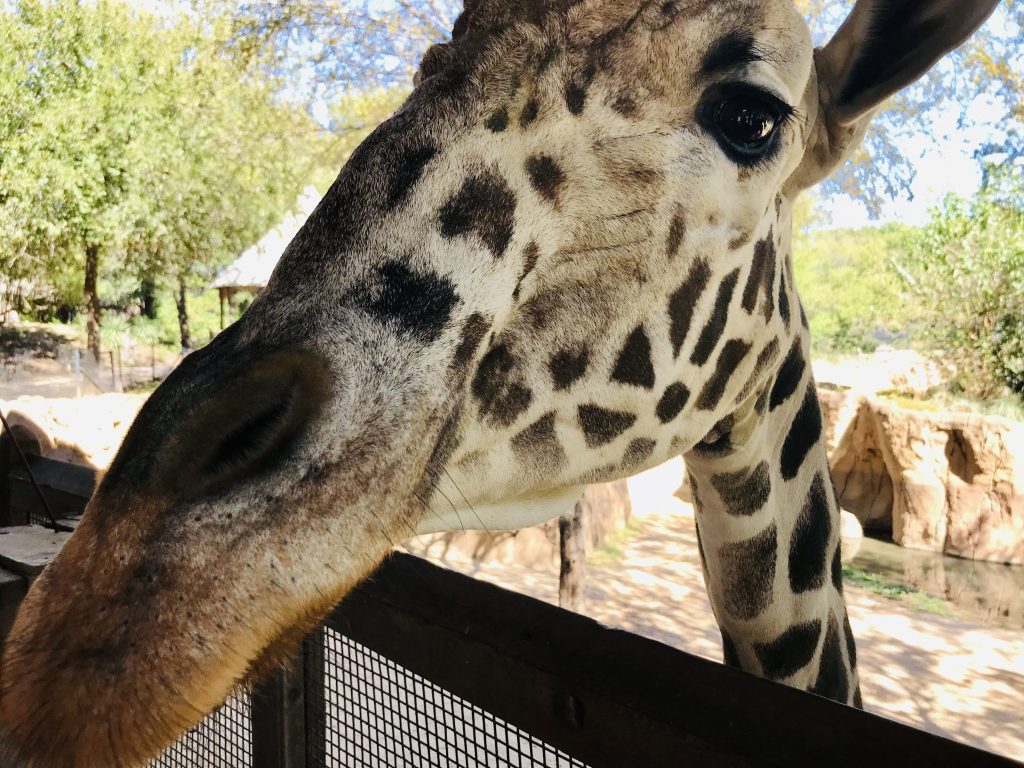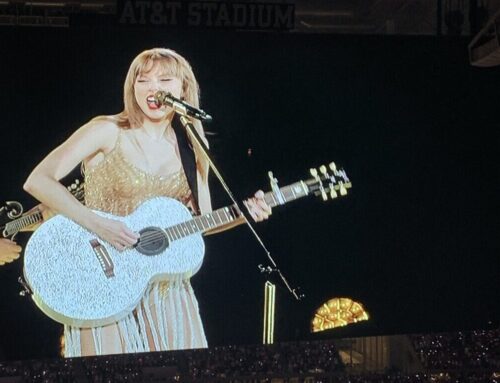To experience all-out awe — the wonder that comes from close proximity to an ocean, mountain range or the Northern Lights of Iceland — one need not leave southern Dallas. Just cross I-30 and enter the Dallas Zoo.
Think that’s overselling it? Give this a try — from a platform overlooking the Giants of the Savanna exhibit, lock eye to obsidian eye with Tebogo, the friendliest of a herd of eight reticulated giraffes. He will nuzzle your neck, nibble your hair, maybe chew your smartphone, though he prefers lettuce. Scratch his knobby horns — they are called ossicones, the specialists say.
Gaze downward, upward, and marvel at all 16 feet of him, at least 35% of it neck, all coated in that tawny-ivory pattern that resembles a cracked desert floor.
After an encounter with Tebogo and his fellow sky scraping mammals, not to mention the range-sharing elephants, zebras, ostriches, impalas and guineafowl, the world just seems more impressive.
But the zoo has had a run of tragedy within its giraffe population. In the past six years, three calves have died at the Dallas Zoo. Monday an older giraffe died at age 19. (Their average life expectancy is 25, and Auggie’s end was a result of age-related health issues, the zoo reported).
A few weeks ago the calf called Marekani died as a result of an accident. The zoo just released the incident report from that event, explaining that a fall and collisions while running with the herd caused the severe, untreatable — and thereby fatal —injury. In 2019 Witten, a 1-year-old giraffe, died while under anesthesia, and baby Kipenzi died in 2015 after a collision that led to a broken neck.
As a result of these sad circumstances, we visited the Dallas Zoo last week and talked to Matt James, the Oak Cliff resident who oversees the zoo’s animal care team, specifically about the giraffes.
In the wild, about 50% of calves die in the first year compared to a little under 25% inside a managed care zoo, he says. While unexpected and devastating — to the point where psychologists are employed to counsel James’ staff after animal deaths — he explained that the casualties are not caused by neglect or wrongdoings on the part of the zoo.
“The mortality rate is still much higher than we would like and we want to continue to find ways to get that first-year mortality to be as low as possible,” he says.
A big challenge, James explains, is tempering the giraffes’ freedom to gallop the manmade savanna — simulating the experience of the wild — with keeping tabs on the animals to ensure their welfare.
“It’s a dynamic group, we try to give them as much space as possible, but with those freedoms there are unfortunate accidents. Losing three calves in six years is really hard on us, but the more unfortunate thing is we cannot point to a single cause and go fix it. Each incident was unique situation. We try to learn and mitigate the risk.”
Under the governance of the Association of Zoos and Aquariums, Dallas’ zoo participates in a Species Survival Plan Program — there are some 500 species involved in these programs in whereby accredited zoos and aquariums breed and transfer animals in an effort to keep their respective populations healthy and in existence. James points out that, in the wild, giraffes are undergoing what many experts have come to refer to as “a silent extinction.”
“Giraffes are going extinct in the wild at an alarming rate … driven by wildlife disease and habitat destruction,” he explains, and he says the SSP is vital to creating sustainable populations.
We asked the zoo’s public relations and marketing manager Chelsey Norris — also an Oak Cliff resident — about the decision to announce and explain the deaths to the public through social media.
She seems genuinely eager to educate the masses about how it all works inside the zoo. “Masses” is no exaggeration. Her most recent update about giraffe fatalities has garnered 7,000 comments and counting since yesterday. And they are not all nice.
“Our whole policy on social media is to get people to connect with our animals and to share the story about how much good work we’re doing, but a part of that is that people get very attached to our animals. We have to let them know when something happens. We encourage every conversation because within them are questions and we want to respond even if we don’t have all the answers.”
We talked to the two staffers for a while about the giraffe program, and you can look for the full story in an upcoming issue of Oak Cliff Advocate magazine.
For another perspective, we spoke with Marc Bekoff, a biologist, ethologist, behavioral ecologist from University of Colorado who has toured the nation talking about animal welfare. (He worked at the center of Denmark’s global-outrage-igniting Marius Giraffe case).
He has a problem with the idea that giraffes are born into zoos, kept in zoos and will never leave the zoos. Bekoff does not necessarily deny the conservation and public-awareness benefits that zoos and aquariums can offer, but he is concerned that animals in captivity have lost the freedom to be who they are.
He spoke about the impossibility of replicating animal habitats and the drawbacks of using animals as conservation “ambassadors.”
The scientist and award-winning author who pals around with Jane Goodall left us this to chew on: “Dogs want to be dogs, giraffes want to be giraffes.”






